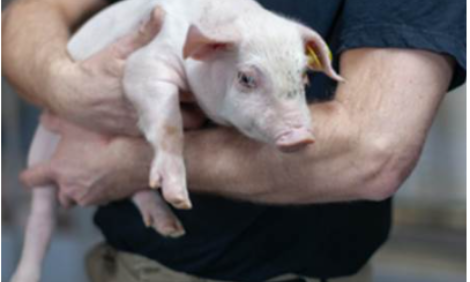



Chlamydiaceae Infections in Pigs
Chlamydiaceae infections in breeding sows, boars and piglets occur more often than thought, according to a recently published review paper.Chlamydiaceae are Gram-negative obligate intracellular bacteria, explain Katelijn Schautteet and Daisy Vanrompay of the University of Ghent in Belgium in their paper in the journal, Veterinary Science.
These bacteria are responsible for a broad range of diseases in animals and humans. Chlamydia suis, Chlamydia abortus, Chlamydia pecorum and Chlamydia psittaci have all been isolated in pigs, the authors continue.
Chlamydiaceae infections in pigs are associated with different pathologies such as conjunctivitis, pneumonia, pericarditis, polyarthritis, polyserositis, pseudo-membranous or necrotizing enteritis, periparturient dysgalactiae syndrome, vaginal discharge, return to oestrus, abortion, mummification, delivery of weak piglets, increased perinatal and neonatal mortality and inferior semen quality, orchitis, epididymitis and urethritis in boars.
However, Chlamydiaceae are still considered as non-important pathogens because reports of porcine chlamydiosis are rare.
Furthermore, Chlamydiaceae infections are often unnoticed because tests for Chlamydiaceae are not routinely performed in all veterinary diagnostic laboratories and Chlamydiaceae are often found in association with other pathogens, which are sometimes more easily detected.
However, recent studies have demonstrated that Chlamydiaceae infections in breeding sows, boars and piglets occur more often than thought and are economically important.
Schautteet and Vanrompay says that their paper presents an overview on: the taxonomy of Chlamydiaceae occurring in pigs, diagnostic considerations, epidemiology and pathology of infections with Chlamydiaceae in pigs, public health significance and finally on prevention and treatment of Chlamydiaceae infections in pigs.
Reference
Schautteet K. and D. Vanrompay. 2011. Chlamydiaceae infections in pigs. Veterinary Research, 42:29. doi:10.1186/1297-9716-42-29
Further Reading
| - | You can view the full paper by clicking here. |
March 2011








